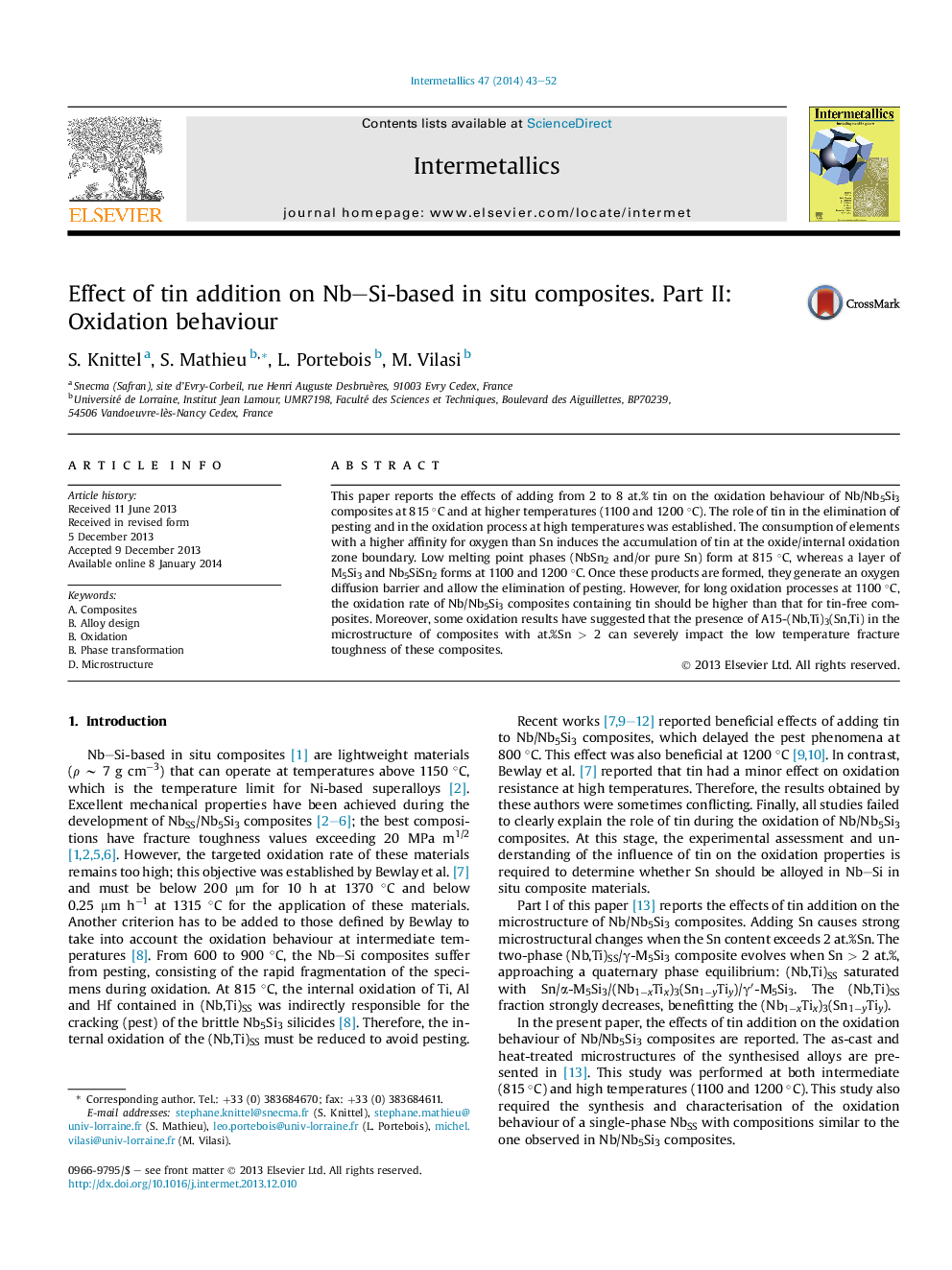| Article ID | Journal | Published Year | Pages | File Type |
|---|---|---|---|---|
| 1600185 | Intermetallics | 2014 | 10 Pages |
•Oxidation of Sn containing Nb/Nb5Si3 results in the formation of NbSn2 or/and Sn at 815 °C.•Oxidation of Sn containing Nb/Nb5Si3 results in the formation of Nb5SiSn2 at high temperature.•The Sn-rich compounds act as a diffusion barrier to oxygen inward diffusion.•Sn do not improve the oxidation resistance of Nb/Nb5Si3 at high temperature.•The A15-(Nb,Ti)3(Sn,Ti) contained in samples with Sn > 2 at.% evidenced brittleness.
This paper reports the effects of adding from 2 to 8 at.% tin on the oxidation behaviour of Nb/Nb5Si3 composites at 815 °C and at higher temperatures (1100 and 1200 °C). The role of tin in the elimination of pesting and in the oxidation process at high temperatures was established. The consumption of elements with a higher affinity for oxygen than Sn induces the accumulation of tin at the oxide/internal oxidation zone boundary. Low melting point phases (NbSn2 and/or pure Sn) form at 815 °C, whereas a layer of M5Si3 and Nb5SiSn2 forms at 1100 and 1200 °C. Once these products are formed, they generate an oxygen diffusion barrier and allow the elimination of pesting. However, for long oxidation processes at 1100 °C, the oxidation rate of Nb/Nb5Si3 composites containing tin should be higher than that for tin-free composites. Moreover, some oxidation results have suggested that the presence of A15-(Nb,Ti)3(Sn,Ti) in the microstructure of composites with at.%Sn > 2 can severely impact the low temperature fracture toughness of these composites.
